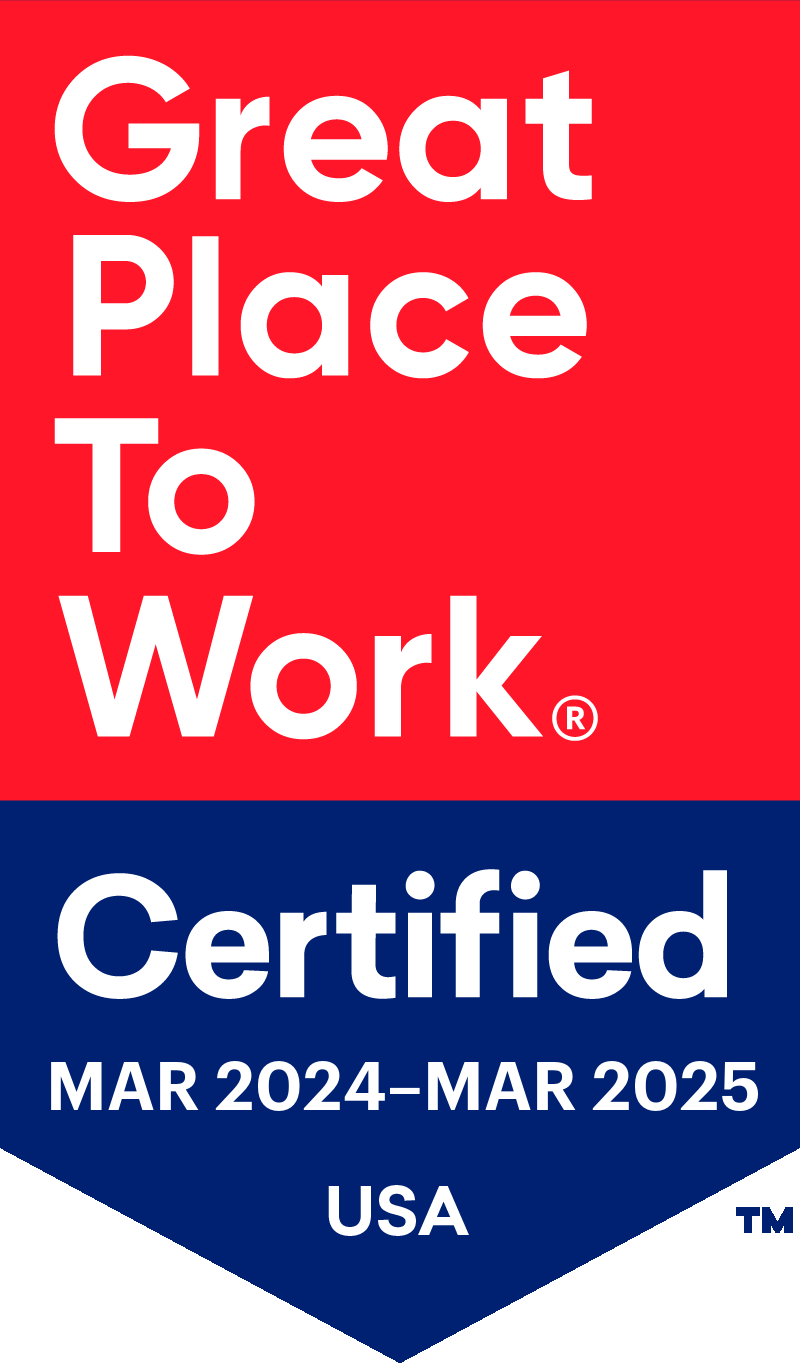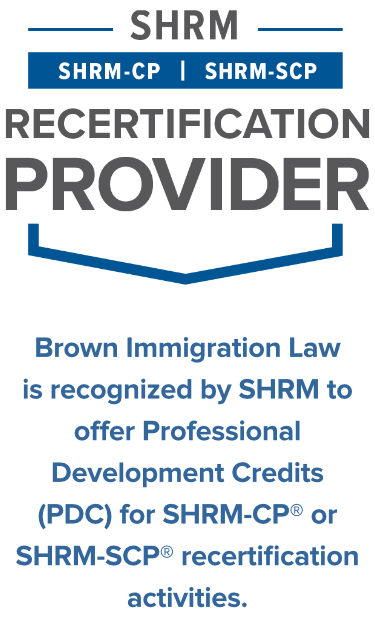**Important Update: On March 21, 2024, USCIS issued a notice extending the deadline for H-1B registrations in the FY 2025 lottery to noon Eastern on March 25, 2024. Please contact us immediately if you have any new or additional registrants.
This memo is intended to provide information related to the H-1B Cap season commencing with registration in March 2024 for new H-1Bs effective on October 1, 2024 (or later). These are known as Fiscal Year 2025 (“FY25”) filings as the USCIS fiscal year for 2025 begins on October 1, 2024. This memo is provided for informational and discussion purposes only. It does not act as a substitute for legal advice on an individual basis.
Approximate read time: 10 minutes. Too long, prefer to listen? Check our webinars page to learn more about the process, latest updates, and everything else you need to know as an employer or foreign national interested in the H-1B Cap. Also sign up for our News Alerts at the bottom of the page.
NOTE: This memo will be promptly updated with any new information or changes confirmed by USCIS throughout the H-1B Cap season. Last updated January 31, 2024 (to include changes implemented by the final rule, Improving the H-1B Registration Selection Process and Program Integrity, to be published February 2, 2024).
Regulatory H-1 Cap and the Lottery System
The so called “Cap” we refer to applies to all NEW H-1B filings where the sponsored employee has NOT previously been counted against the Cap and where the employer is not somehow Cap-exempt (some employers or employment situations permit Cap exemption). Since the demand for H-1B visas is so high, USCIS conducts an annual lottery to determine who will have the opportunity to file for H-1B status under the cap each year. Once an employee has been counted against the Cap, they can apply for and extend their H-1B status outside of the annual lottery process, until they have used their maximum allowance of six years in H-1B status (or longer, if they have reached a certain point in the green card process).
There are essentially two H-1B Caps or quotas (i.e., statutory limits on how many new H-1Bs USCIS can be issued each year). The first is the standard Cap for regular H-1B filings (referred to as the “Regular Cap”) for individuals with a bachelor’s degree or equivalent that qualify for H-1B status. There are only 65,000 Regular Cap H-1B filings permitted per fiscal year, and of this number, 6,800 available spaces have been reserved for citizens of Chile and Singapore. The second Cap is technically a Cap exemption, but is limited in number and ultimately runs out each fiscal year, thus creating a separate Cap. The second cap is in reference to an additional 20,000 H-1Bs set aside for individuals who graduate from a U.S. master’s degree program (or higher-level education) that meets certain criteria (referred to as the “Master’s Cap”).
USCIS implemented an electronic registration system for H-1B Cap selection in 2020. With the electronic registration system, employers or their authorized representatives can register potential H-1B employees online for a registration fee of $10 USD for each potential worker. Notably, this fee will increase for next year’s lottery in 2025 (FY26) to a fee of $215 USD for each potential worker. The H-1B Cap registration period for 2024 (FY25) has been confirmed by USCIS, opening at noon Eastern on March 6, 2024, and closing noon Eastern on March 22, 2024. Once the registration period closes, USCIS will conduct a lottery to randomly select the number of registrations needed to reach the H-1B numerical limit. We have no control over the lottery and whether a case makes it into the lottery. The process is entirely random.
USCIS will notify employers and their legal representatives of the lottery results no later than March 31, 2024. Selected registrations are those who have “won” the H-1B lottery and will be eligible to file a cap-subject H-1B petition with USCIS no earlier than April 1st and no later than 90 days after selection. Only the employer listed on the registration will be eligible to file a petition for the foreign national selected in the lottery, and the information on the registration must match the filed H-1B exactly. Registrations not selected in the lottery will remain on reserve for the applicable fiscal year. If USCIS does not receive and approve enough H-1B petitions to fulfill the statutory quota from the initial lottery, it will run subsequent lotteries and select additional registrants from those on reserve to meet the annual cap.
The likelihood of selection and number of draws changes from year to year, making it very difficult to predict how the process will play out this year. The following table provides data from the past four years for reference. Importantly, please review the next section of this memo to apprise yourself of an important update which is expected to increase the chance of selection in this year’s lottery and those to come.
| Year | Total Eligible Registrations | Total Selections | Number of Draws |
| 2020 (FY 2021) | 269,424 | 124,415 | 2 (March, August) |
| 2021 (FY 2022) | 301,447 | 131,924 | 3 (March, August, November) |
| 2022 (FY 2023) | 474,421 | 127,600 | 1 (March) |
| 2023 (FY 2024) | 758,994 | 188,400 | 2 (March, July) |
Updates to this Year’s Cap Process
In October 2023, USCIS issued a Notice of Proposed Rule Making (“NPRM”), entitled Modernizing H-1B Requirements, Providing Flexibility in the F-1 Program, and Program Improvements Affecting Other Nonimmigrant Workers. Several of the proposed changes specifically related to the H-1B Cap have been implemented by a final rule, published as of February 2, 2024.
One of the most significant changes confirmed in the final rule is modifying the H-1B Cap selection process to select registrations based on unique beneficiary as opposed to selecting unique registrations submitted by one or more employers on the beneficiary’s behalf. In other words, under this new rule, each beneficiary will only be entered into the lottery once, regardless of the number of employers willing to register them. If a beneficiary is selected, each employer sponsoring the registration will be notified of the selection and will be eligible to file an H-1B petition during the applicable H-1B Cap filing period. This change is significant because it effectively eliminates the benefit of individuals finding multiple employers willing to register them and increase their chance of selection. To put the significance of this change into context, of the approximately 759,000 eligible registrations received in 2023, more than half (408,891) were for beneficiaries with multiple registrations, resulting in a dramatic increase in total registrations received by USCIS and lower chance of selection for beneficiaries registered by only one employer. With the new method of selecting registrations by unique beneficiary, rather than unique registration, each beneficiary will now have the same chance of being selected, regardless of how many registrations are submitted on their behalf, which will produce more equitable results and likely a higher chance of selection overall.
In further efforts to improve H-1B program integrity, the new rule also codifies the following:
- As unique beneficiaries will be identified by the passport or travel document information provided on their registration, beneficiaries are prohibited from being registered under more than one passport or valid travel document. If a Beneficiary is found doing so, revocation or denial will follow.
- Furthermore, USCIS may deny or revoke H-1Bs where:
- There is a mismatch in the beneficiary’s identifying information as stated in the registration with what is eventually stated in the H-1B petition if selected;
o The underlying registration contained false information; - The registration fee was invalid;
- The filing of an H-1B petition was not based on a valid registration; or
- Where statements in the LCA, or in the H-1B registration or petition, were inaccurate, fraudulent, misrepresent a material fact, or are false. The denial or revocation may occur whenever this information is discovered.
- There is a mismatch in the beneficiary’s identifying information as stated in the registration with what is eventually stated in the H-1B petition if selected;
Our Process and Anticipated Timeline
We ask employers to notify us of any H-1B cap registrants as soon as possible to ensure timely registration. We will evaluate each case to ensure it satisfies all H-1B criteria and gather any information or documentation needed to complete the registration and prepare the USCIS petition, if selected.
The H-1B Cap is ultimately a two-step process:
STEP 1: To complete the registration process, our team will take the following steps:
- Gather all necessary information to evaluate the case and prepare the registration.
- Assist employers in creating a proper USCIS Registrant Account, if needed (new accounts can usually be created in the week prior to registration opening).
- Note: This year, USCIS has announced that it is releasing enhanced organizational accounts for employers and legal representatives, which will alter the H-1B registration process from an account user perspective. Thes enhanced accounts will become available on February 28, 2024. We will provide clients with guidance on setting up enhanced accounts at that time.
- Draft registrations and provide step-by-step instructions for the employer to verify submissions on behalf of the company.
- Ensure timely registration of all potential H-1B workers during the designated registration period – the registration period this year will open at 12:00pm EST on March 6, 2024 and close on March 22, 2024 at 12:00 EST.
- USCIS conducts the initial lottery and confirms selections no later than March 31, 2024.
- For those selected in the lottery, we will proceed to Step 2. For those not selected in the initial lottery, we will discuss next steps and contingency plans as needed on a case-by-case basis.
STEP 2: For proposed H-1B workers selected in the lottery, the next steps are as follows:
- Our team will request any outstanding documents or additional information needed to prepare the actual H-1B petition when we notify you of the results and file with USCIS as soon as possible.
- We will have 90 days following the selection date to file the actual H-1B petition with USCIS.
- Under regular USCIS processing, H-1B petitions are currently taking between 5-8 months to be adjudicated once filed. We expect Premium Processing Service to be an available option for H-1B Cap filings, which would provide a decision from USCIS within 15 calendar days of receipt. The USCIS fee for Premium Processing will be $2,805 (as of February 26, 2024). The decision to file under Regular or Premium Processing only applies to the filing of the actual H-1B petition with USCIS.
- Approved H-1B Cap petitions will take effect no earlier than October 1, 2024.
As described above, if the statutory caps are not met through the initial lottery, USCIS will conduct subsequent lotteries until the numerical limit for the fiscal year is reached. If subsequent lotteries take place, USCIS will select additional registrants who remain on reserve from the initial registration period. This process will be automatic, no further action will be required for registrants not selected initially to be considered for subsequent lotteries for this fiscal year. We will monitor the status of the H-1B Cap throughout the year and notify clients if additional registrants are selected.
To learn more about the H-1B Cap and stay informed throughout the process, visit our Resources page to find the latest News Alerts and upcoming webinars on this topic. Also refer back to this memo which will be updated based on any new information throughout the Cap season.



